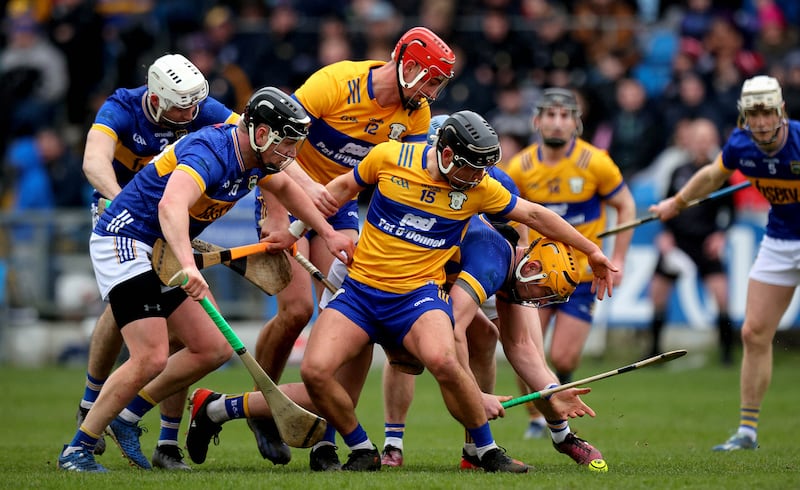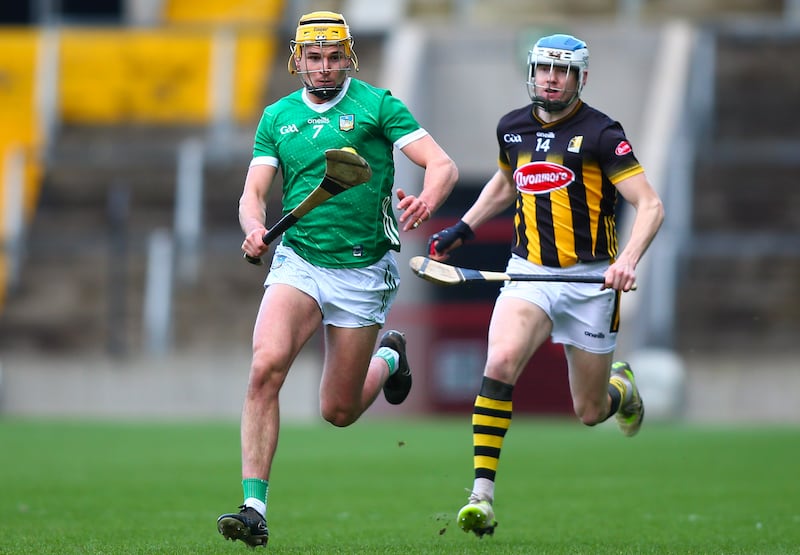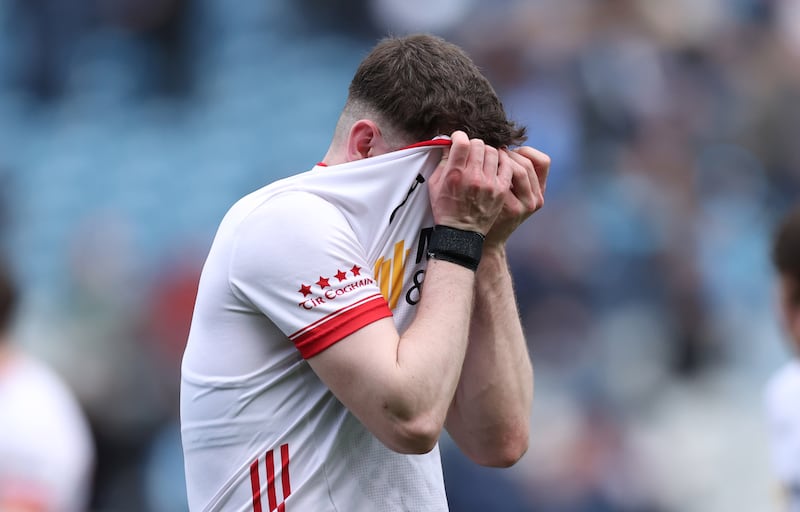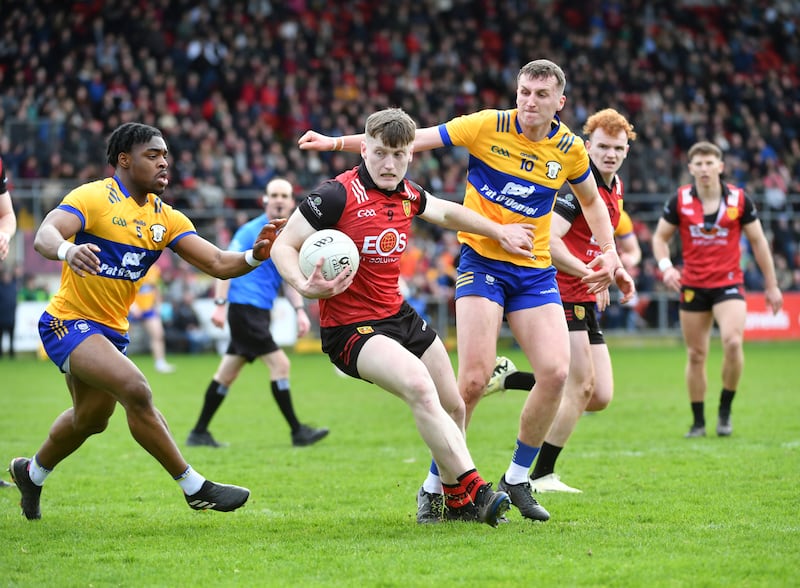Dublin’s understated league record under Dessie Farrell
The league was arguably as remarkable a benchmark for Jim Gavin’s Dublin as the championship. Winning five successive All-Irelands set a new record – extended by Dessie Farrell a year later – and redefined the mythologies of the game.
Yet it was in the spring competition that Dublin demonstrated extraordinary consistency, going undefeated for 36 league and championship fixtures. Bookended by Kerry defeats in March 2015 and over two years later, in the 2017 Division One final, the run eclipsed Kerry’s own sequence.
In an illustration of how the intercounty calendar has changed, that earlier record was set over five years rather than two, 1928-33.
Gavin’s successor hasn’t always appeared to set the same store by the league but his record isn’t bad. In Farrell’s first year, Dublin finished a point behind Kerry and but for Covid would have had a final against them to decide the Division One title.
A year later the two counties were deemed joint winners, as there was no time in another pandemic-restricted season to play the final for which they had both qualified. The blot on Farrell’s ledger was relegation in 2022, inflicted in injury time by Monaghan in Clones on the last day of the season.
Yet 12 months later they were back after a first Division Two campaign in 14 years, winning the divisional title and avenging their only regulation defeat – by Derry – in the final.
Now the same counties are back in the elite decider.
Already, Dublin have adjusted some long running trends. The win over Derry at the start of the month was the county’s first in Celtic Park whereas Sunday’s 21-point romp was the first win in a regulation league match at Croke Park against Tyrone (they did win the 2013 final against the same county).
That covers a long period when Dublin played home matches in Parnell Park and the league rivalry isn’t particularly lengthy. The first divisional match between the counties was in November 1991 and laid down a bit of a marker - Tyrone winning 4-11 to 0-11.
There have been seven divisional matches between them in all, two of which ended in draws. Sunday’s win was a first for Dublin. — Seán Moran

Tipperary must find some leaders, and a way to perform when the chips are down
The really worrying thing for Tipperary on Sunday was that the 20 (twenty!) wides probably weren’t even the losing of the game. Nor was the headline fact that half the wides were from placed balls and that four different freetakers couldn’t find the sweet spot for love nor money. These were obviously contributing factors but the reality was that Clare were generally able to score at will when they needed to. More Tipp scores would likely have meant more Clare scores.
When Liam Cahill goes through the video, what will really stand out is how leaderless his side were when the game was going against them. Finding yourself 0-8 to 0-0 down after 11 minutes obviously isn’t how any team wants to start any game but the scoreline was just a symptom of the malaise. In that period, no Tipp player took responsibility for slowing the game down or upsetting Clare’s rhythm.
They looked like a team that lacked the experience or knowhow when it came to managing the game. They kept doing what they came to do – keeping possession, playing short stick-passes, working the ball through the lines. They looked like a young team dutifully trying to play to the gameplan, forgetting Jim Gavin’s old maxim that no battle plan ever survives first contact with the enemy.
The thing is, when they click, they’re clearly very dangerous. Jake Morris’s goal was a beaut, set up by a sumptuous 60-yard flat pass from Dan McCormack that didn’t appear to ever rise more than 10 feet in the air. Seán Hayes pinged home a similarly unstoppable goal after half-time, running off Conor Bowe’s surge through the middle. Playing like that, Tipp are thrilling to watch.
But having got back to within two points in the 45th minute, all it took was a couple of handy Clare frees to make them crumble again. The game was there for them but once their momentum was interrupted, they disappeared again. They only scored two points in the last 28 minutes of the game.
If they don’t find a way to function when they’re not quite clicking, it’s hard to see a long summer ahead. — Malachy Clerkin

Limerick have the chance to mix things up - but only if they actually want to
In his press conference on Saturday John Kiely said that there would be places “up for grabs” in training over the next month, which is the kind of thing you would expect to hear from a manager who had just witnessed his team splinter like a meringue.
It will be interesting to see how that plays out, though, because one of Kiely’s defining characteristics has been his conservatism in team selection when the championship comes round. A familiar 15 permed from about 18 players.
Looking at the starting 15s from the last time Kilkenny beat Limerick – in the 2019 All-Ireland semi-final – seven of Kilkenny’s starters are no longer even on the panel. From Limerick’s starting 15 that day, Richie English is the only one no longer in the picture. Three of the Limerick’s used subs that day – Barry Nash, Darragh O’Donovan and David Reidy – all started the All-Ireland final last July. Winning teams are easier to maintain.
The only young player who has consistently threatened a breakthrough is Cathal O’Neill, now in his fourth season on the panel. Where does he stand now? His re-location to centre back in Declan Hannon’s absence seemed like a typically perishable experiment for this time of the year, but O’Neill performed well in the role, and was even better at wing-back on Saturday.
On the assumption that Hannon won’t be dropped, and Kyle Hayes will be re-instated, there isn’t an opening though in the half-back line. Peter Casey’s straight red on Saturday rules him out of Limerick’s opening championship match but O’Neill is not cut out for that role, starting at the top of the D and foraging from there. If he starts in attack, O’Neill is a half-forward.
So, where can they fit him in and how can they leave him out? Has he not served his time? Are there really places up for grabs? Is it time to shake it up? Last Saturday has given Kiely the perfect opportunity to do some interior decorating. — Denis Walsh

Capital punishment for Tyrone
Not only did Tyrone succumb to a first divisional league defeat at Croke Park against Dublin but the nature of the defeat had unsettling echoes of the county’s last trip to headquarters.
Last July’s All-Ireland quarter-final against Kerry was an opportunity for Tyrone to make some sort of statement in a match between the champions and their predecessors. That’s how it was shaping up in the first half, at the end of which Kerry led by three.
The second half turned into a procession, the champions outscoring their opponents 2-9 to 0-6. It wouldn’t live long in the memory but for the virtuoso moment supplied by David Clifford. With slightly over an hour gone, he produced a Houdini feat of escapology.
Hemmed in on the sideline by two All Star defenders, Ronan McNamee and Pádraig Hampsey, Clifford simply snap-volleyed the ball over everyone and into the clear path of Tony Brosnan, who set up Seán O’Shea for Kerry’s second goal.
The final score even had echoes of Sunday, Kerry winning by 2-18 to 0-12 and Dublin just adding three further goals for 5-18 to 0-12.
At the weekend, Tyrone manager Brian Dooher sounded a melancholy note when asked about the impact on a fairly young team.
“There is a lot of young boys there, and I suppose it’s a chastening experience for them but I suppose at the same time, at this level of football, there’s very little forgiveness.”
On a brighter note, a previous league embarrassment three years ago in the 2021 league semi-final, which they lost 1-14 to 6-15 against Kerry in Killarney, was fairly swiftly redeemed when Tyrone overturned the result in that year’s All-Ireland semi-final before lifting the county’s most recent Sam Maguire.
Asked whether they could take comfort from that transformation, Dooher was almost despairingly vague.
“There’s a bit of personal responsibility for everybody, first and foremost, and you have to look at yourself in the mirror and see what you did or didn’t do well.” — Seán Moran

Clare and present danger
The Division Three National Football League final between Down and Westmeath next Saturday is arguably the most significant of the four divisional deciders over the weekend – because the loser will be immediately relieved of their All-Ireland SFC ticket gained by league promotion and instead they will be left to try pick up another entry through the provincial championships.
Because of the Munster SFC draw, one of Clare, Tipperary or Waterford will contest this year’s provincial football final down south. And with provincial final placings trumping league positions, automatically the 16th placed team in the league (the loser of the Division Three final) will be pushed out of the All-Ireland SFC allocation.
The losing team will still have a shot at redemption in their provincial championship but they will already be scrambling to get out of the Tailteann Cup. Of course the winner of the Division Three final could also ultimately lose their All-Ireland SFC spot if, for instance, Clare and Kildare advance to their respective provincial finals. The peculiarity of it all is that Down beat Clare at the weekend to secure Division Three promotion, but right now the Banner’s path to the All-Ireland SFC looks more straightforward. — Gordon Manning
- Listen to our Inside Politics Podcast for the latest analysis and chat
- Sign up for push alerts and have the best news, analysis and comment delivered directly to your phone
- Find The Irish Times on WhatsApp and stay up to date














